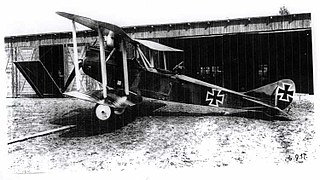This page is based on this
Wikipedia article Text is available under the
CC BY-SA 4.0 license; additional terms may apply.
Images, videos and audio are available under their respective licenses.

Freiherr, Freifrau and Freiin are designations used as titles of nobility in the German-speaking areas of the Holy Roman Empire, and in its various successor states, including Austria, Prussia, Bavaria, Liechtenstein, Luxembourg, etc. Traditionally it denotes the titled rank within the nobility above Ritter (knight) and Edler and below Graf and Herzog (duke). The title superseded the earlier medieval form, Edelherr.

The Etrich Taube, also known by the names of the various later manufacturers who build versions of the type, such as the Rumpler Taube, was a pre-World War I monoplane aircraft. It was the first military aeroplane to be mass-produced in Germany.
Von [fɔn] is a term used in German language surnames either as a nobiliary particle indicating a noble patrilineality, or as a simple preposition used by commoners that means of or from.
Rumple Minze is a German-style liqueur brand, best known for peppermint schnapps. The brand is owned by the alcoholic beverage holding company Diageo, based in London.

The Rumpler Tropfenwagen was a car developed by Austrian engineer Edmund Rumpler.

The Rumpler C.IV was a German single-engine, two-seat reconnaissance biplane. The C.IV was a development of C.III with different tail surfaces and using a Mercedes D.IVa engine in place of C.III's Benz Bz.IV. In addition to the parent company, the aircraft was also built by Pfalz Flugzeugwerke as the Pfalz C.I. Another variant of the basic design was the Rumpler 6B 2 single-seat floatplane fighter, with a 120 kW (160 hp) Mercedes D.III engine, built for the Kaiserliche Marine.

Entering service in 1915, the Rumpler C.I,, two-seater single-engine reconnaissance biplane, was one of the first German C-type aircraft, and also one of the longest serving in its class during World War I, being retired from the last front line units only in early 1918.
Rumpler Flugzeugwerke, usually known simply as Rumpler was a German aircraft manufacturer founded in Berlin by Austrian engineer Edmund Rumpler in 1909 as Rumpler Luftfahrtzeugbau. The firm originally manufactured copies of the Etrich Taube monoplane, but turned to building reconnaissance biplanes of its own design through the course of the First World War, in addition to a smaller number of fighters and bombers.

The Rumpler C.VII was a military reconnaissance aircraft built in Germany during World War I. It was developed from the C.IV and optimised for high-altitude missions that would allow it to operate at heights that would render it immune to interception by enemy fighters. Work on the C.VII took place after a similar attempt to develop the C.III into a high-altitude machine as the C.V failed.

The Rumpler C.X, given the company designation Rumpler 8C 14, was a German two-seater, developed from the earlier Rumpler 8C 13 prototype by Rumpler in early 1918. The prototype had a similar wing cellule to the C.VII, and was initially powered by a 260 hp (194 kW) Mercedes D.IVa engine, later powered by a 240 hp (179 kW) Maybach Mb.IVa engines). The C.X had the highest top speed and service ceiling of all German C-type aircraft and an order was placed for the aircraft in August 1918. Only a few were built and tested before the war ended.
Rumpler is an Austrian automotive and aircraft manufacturer.
I Promise is a 1994 Austrian drama film directed by Wolfgang Murnberger. The film was selected as the Austrian entry for the Best Foreign Language Film at the 67th Academy Awards, but was not accepted as a nominee.

Gernot Rumpler is an Austrian sports shooter. He competed in the men's 10 metre air rifle event at the 2016 Summer Olympics.
The Rumpler C.IX was a German single-engine, two-seat reconnaissance biplane of World War I.
The Germania C.IV was a two-seat general-purpose biplane built by Germania Flugzeugwerke during World War I.








